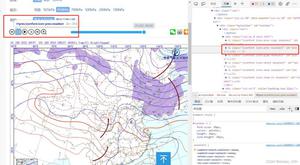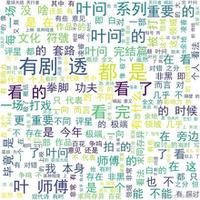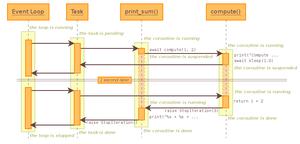python实现泊松图像融合
本文实例为大家分享了python实现泊松图像融合的具体代码,供大家参考,具体内容如下
```
from __future__ import division
import numpy as np
import scipy.fftpack
import scipy.ndimage
import cv2
import matplotlib.pyplot as plt
#sns.set(style="darkgrid")
def DST(x):
"""
Converts Scipy's DST output to Matlab's DST (scaling).
"""
X = scipy.fftpack.dst(x,type=1,axis=0)
return X/2.0
def IDST(X):
"""
Inverse DST. Python -> Matlab
"""
n = X.shape[0]
x = np.real(scipy.fftpack.idst(X,type=1,axis=0))
return x/(n+1.0)
def get_grads(im):
"""
return the x and y gradients.
"""
[H,W] = im.shape
Dx,Dy = np.zeros((H,W),'float32'), np.zeros((H,W),'float32')
j,k = np.atleast_2d(np.arange(0,H-1)).T, np.arange(0,W-1)
Dx[j,k] = im[j,k+1] - im[j,k]
Dy[j,k] = im[j+1,k] - im[j,k]
return Dx,Dy
def get_laplacian(Dx,Dy):
"""
return the laplacian
"""
[H,W] = Dx.shape
Dxx, Dyy = np.zeros((H,W)), np.zeros((H,W))
j,k = np.atleast_2d(np.arange(0,H-1)).T, np.arange(0,W-1)
Dxx[j,k+1] = Dx[j,k+1] - Dx[j,k]
Dyy[j+1,k] = Dy[j+1,k] - Dy[j,k]
return Dxx+Dyy
def poisson_solve(gx,gy,bnd):
# convert to double:
gx = gx.astype('float32')
gy = gy.astype('float32')
bnd = bnd.astype('float32')
H,W = bnd.shape
L = get_laplacian(gx,gy)
# set the interior of the boundary-image to 0:
bnd[1:-1,1:-1] = 0
# get the boundary laplacian:
L_bp = np.zeros_like(L)
L_bp[1:-1,1:-1] = -4*bnd[1:-1,1:-1] \
+ bnd[1:-1,2:] + bnd[1:-1,0:-2] \
+ bnd[2:,1:-1] + bnd[0:-2,1:-1] # delta-x
L = L - L_bp
L = L[1:-1,1:-1]
# compute the 2D DST:
L_dst = DST(DST(L).T).T #first along columns, then along rows
# normalize:
[xx,yy] = np.meshgrid(np.arange(1,W-1),np.arange(1,H-1))
D = (2*np.cos(np.pi*xx/(W-1))-2) + (2*np.cos(np.pi*yy/(H-1))-2)
L_dst = L_dst/D
img_interior = IDST(IDST(L_dst).T).T # inverse DST for rows and columns
img = bnd.copy()
img[1:-1,1:-1] = img_interior
return img
def blit_images(im_top,im_back,scale_grad=1.0,mode='max'):
"""
combine images using poission editing.
IM_TOP and IM_BACK should be of the same size.
"""
assert np.all(im_top.shape==im_back.shape)
im_top = im_top.copy().astype('float32')
im_back = im_back.copy().astype('float32')
im_res = np.zeros_like(im_top)
# frac of gradients which come from source:
for ch in xrange(im_top.shape[2]):
ims = im_top[:,:,ch]
imd = im_back[:,:,ch]
[gxs,gys] = get_grads(ims)
[gxd,gyd] = get_grads(imd)
gxs *= scale_grad
gys *= scale_grad
gxs_idx = gxs!=0
gys_idx = gys!=0
# mix the source and target gradients:
if mode=='max':
gx = gxs.copy()
gxm = (np.abs(gxd))>np.abs(gxs)
gx[gxm] = gxd[gxm]
gy = gys.copy()
gym = np.abs(gyd)>np.abs(gys)
gy[gym] = gyd[gym]
# get gradient mixture statistics:
f_gx = np.sum((gx[gxs_idx]==gxs[gxs_idx]).flat) / (np.sum(gxs_idx.flat)+1e-6)
f_gy = np.sum((gy[gys_idx]==gys[gys_idx]).flat) / (np.sum(gys_idx.flat)+1e-6)
if min(f_gx, f_gy) <= 0.35:
m = 'max'
if scale_grad > 1:
m = 'blend'
return blit_images(im_top, im_back, scale_grad=1.5, mode=m)
elif mode=='src':
gx,gy = gxd.copy(), gyd.copy()
gx[gxs_idx] = gxs[gxs_idx]
gy[gys_idx] = gys[gys_idx]
elif mode=='blend': # from recursive call:
# just do an alpha blend
gx = gxs+gxd
gy = gys+gyd
im_res[:,:,ch] = np.clip(poisson_solve(gx,gy,imd),0,255)
return im_res.astype('uint8')
def contiguous_regions(mask):
"""
return a list of (ind0, ind1) such that mask[ind0:ind1].all() is
True and we cover all such regions
"""
in_region = None
boundaries = []
for i, val in enumerate(mask):
if in_region is None and val:
in_region = i
elif in_region is not None and not val:
boundaries.append((in_region, i))
in_region = None
if in_region is not None:
boundaries.append((in_region, i+1))
return boundaries
if __name__=='__main__':
"""
example usage:
"""
import seaborn as sns
im_src = cv2.imread('../f01006.jpg').astype('float32')
im_dst = cv2.imread('../f01006-5.jpg').astype('float32')
mu = np.mean(np.reshape(im_src,[im_src.shape[0]*im_src.shape[1],3]),axis=0)
# print mu
sz = (1920,1080)
im_src = cv2.resize(im_src,sz)
im_dst = cv2.resize(im_dst,sz)
im0 = im_dst[:,:,0] > 100
im_dst[im0,:] = im_src[im0,:]
im_dst[~im0,:] = 50
im_dst = cv2.GaussianBlur(im_dst,(5,5),5)
im_alpha = 0.8*im_dst + 0.2*im_src
# plt.imshow(im_dst)
# plt.show()
im_res = blit_images(im_src,im_dst)
import scipy
scipy.misc.imsave('orig.png',im_src[:,:,::-1].astype('uint8'))
scipy.misc.imsave('alpha.png',im_alpha[:,:,::-1].astype('uint8'))
scipy.misc.imsave('poisson.png',im_res[:,:,::-1].astype('uint8'))
im_actual_L = cv2.cvtColor(im_src.astype('uint8'),cv2.cv.CV_BGR2Lab)[:,:,0]
im_alpha_L = cv2.cvtColor(im_alpha.astype('uint8'),cv2.cv.CV_BGR2Lab)[:,:,0]
im_poisson_L = cv2.cvtColor(im_res.astype('uint8'),cv2.cv.CV_BGR2Lab)[:,:,0]
# plt.imshow(im_alpha_L)
# plt.show()
for i in xrange(500,im_alpha_L.shape[1],5):
l_actual = im_actual_L[i,:]#-im_actual_L[i,:-1]
l_alpha = im_alpha_L[i,:]#-im_alpha_L[i,:-1]
l_poisson = im_poisson_L[i,:]#-im_poisson_L[i,:-1]
with sns.axes_style("darkgrid"):
plt.subplot(2,1,2)
#plt.plot(l_alpha,label='alpha')
plt.plot(l_poisson,label='poisson')
plt.hold(True)
plt.plot(l_actual,label='actual')
plt.legend()
# find "text regions":
is_txt = ~im0[i,:]
t_loc = contiguous_regions(is_txt)
ax = plt.gca()
for b0,b1 in t_loc:
ax.axvspan(b0, b1, facecolor='red', alpha=0.1)
with sns.axes_style("white"):
plt.subplot(2,1,1)
plt.imshow(im_alpha[:,:,::-1].astype('uint8'))
plt.hold(True)
plt.plot([0,im_alpha_L.shape[0]-1],[i,i],'r')
plt.axis('image')
plt.show()
plt.subplot(1,3,1)
plt.imshow(im_src[:,:,::-1].astype('uint8'))
plt.subplot(1,3,2)
plt.imshow(im_alpha[:,:,::-1].astype('uint8'))
plt.subplot(1,3,3)
plt.imshow(im_res[:,:,::-1]) #cv2 reads in BGR
plt.show()
以上是 python实现泊松图像融合 的全部内容, 来源链接: utcz.com/z/354708.html





